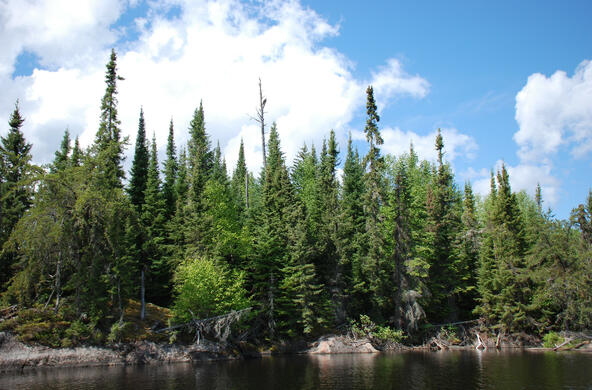Once there were big stands of hemlocks in the ravines and on the steep creek-banks. Their shade was so deep that hardly any underbrush could survive, so the ground was clear between their big trunks. It really did remind you of a green cathedral. Where there were openings along the creek or where a tree had blown over, bright shafts of sunlight would slice down to the forest floor, like in paintings. The ground was covered with a thick mat of needles, making it so soft underfoot that you could walk through the woods without making a sound. The needles made the air a little fragrant, not as sharp as under pine trees, but distinctly aromatic. During the winter, when a breeze shook the branches, motes of snow would sparkle in the air.
The street I grew up on was lined with elms. There was a little median strip with weeping mulberries and gnarled crabapples, and high above it all, the vaulted green canopy of elms. I didn’t know it at the time, but the elms gave the street an air of quiet elegance. (And there was little in this small Midwestern city of stamping plants and paper mills that you’d call elegant.) The huge elm tree that spread over the intersection of Macomb and First Street made it seem quiet and civilized. When the blight finally got that tree, we saw that the corner really was common--hot, and noisy, surrounded by parking lots and sagging old houses. Those elms are gone now.
We’d sit outside on summer evenings as the heat drained out of the day and the sky turned to deep, smooth blue. The bats came out just before the first stars, skittering through the sky on their crazy flight paths. I knew that they were mammals, but they always looked more like little jagged birds. If you threw a pebble up into the air, sometimes they’d veer over to investigate before swooping back to their business catching bugs.
These scenes are vanishing from our world, or have already vanished, because we have been careless about moving species around the world. The elms fell victim to Dutch elm disease, which we brought from Europe on diseased logs. The hemlocks are dying because we imported nursery stock contaminated with a deadly new insect (the hemlock wooly adelgid) from Asia. Now it looks like the white-nose syndrome that is killing many of our bats may be from a fungus that we accidentally imported from Europe, harmless to European bats but lethal to our species.
These are just three of literally thousands of non-native species that we’ve brought into the United States, which have caused ecological destruction and billions of dollars in economic damage. Although we’ve known for decades that moving species carelessly around the globe causes countless problems, we still aren’t taking the problem seriously. Species still move freely around the world on human coattails, leaving a trail of new problems in their wakes.
I hate having to polish my stories to keep these scenes alive in my mind after they have vanished from the world. I hate knowing that I’ll fail – that my stories never will be good enough to bring the missing pieces of our world back to life, any more than the old stories that I read about chestnut trees or passenger pigeons make me feel like I am standing in those lost forests or hearing the whirr of a million wings. Most of all, I hate knowing that we’re still making the same careless mistakes that cost us so many pieces of this beautiful world.
This world we live in, and often take for granted, is too valuable to ruin through neglect. We can do better. It starts with people caring enough to encourage policies that prevent invasive species from entering the United States in the first place. We should be protecting our natural heritage for future generations. One day they will wonder why we did so little.






